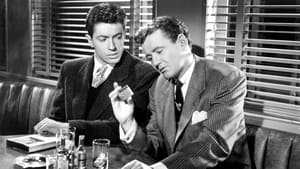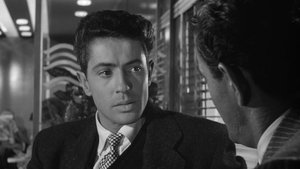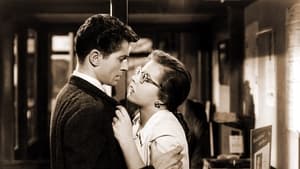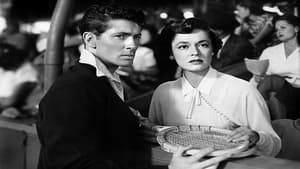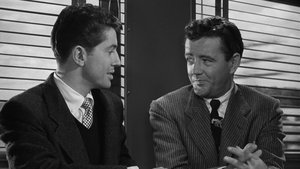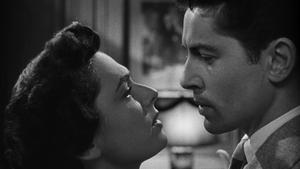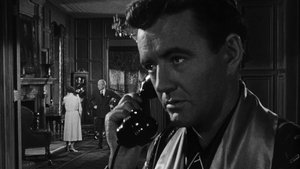Video Sources 0 Views
- Watch trailer
- Strangers on a Train 1951 Colorized

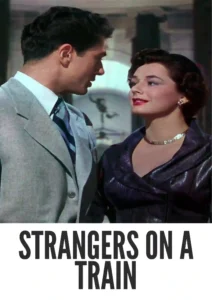
Synopsis
Table of Contents
Toggle
Step into the gripping world of psychological suspense with Strangers on a Train, a captivating thriller from 1951, now stunningly colorized for an immersive viewing experience. Directed by the legendary Alfred Hitchcock, this film intricately weaves a tale of fate, obsession, and the dark side of human nature. Perfect for fans of classic cinema and those intrigued by psychological narratives, this HD download revitalizes a timeless story that continues to resonate with audiences today.
Strangers on a Train follows the intense encounter between two men: Guy Haines (Farley Granger), a successful architect, and Bruno Antony (Robert Walker), an eccentric stranger. During a chance meeting on a train, Bruno proposes a chilling idea—each man should “swap” murders to eliminate their problems without suspicion. What begins as a darkly humorous proposition quickly spirals into a nightmare for Guy when Bruno takes matters into his own hands, committing murder in Guy’s name. The film explores themes of guilt, manipulation, and the psychological effects of crime as Guy finds himself ensnared in Bruno’s sinister game.As the plot unfolds, viewers are taken on a harrowing journey filled with suspenseful twists and turns. The iconic scene involving a carousel serves as both a literal and metaphorical representation of the chaos that ensues as Guy struggles to extricate himself from Bruno’s deadly plans. Ultimately, Strangers on a Train is not just about murder; it delves deep into the psyche of its characters, making it an enduring classic in the thriller genre.
The film features an exceptional cast that brings this psychological thriller to life:
- Farley Granger as Guy Haines
- Robert Walker as Bruno Antony
- Ruth Roman as Anne Morton
- Leo G. Carroll as Senator Morton
- Patricia Hitchcock as Barbara
Strangers on a Train is categorized as a psychological thriller, showcasing Hitchcock’s masterful ability to create tension and suspense through character interactions and moral dilemmas. Its exploration of duality and obsession sets it apart from typical thrillers, making it an essential watch for fans of the genre.
Released in 1951, Strangers on a Train stands as one of Alfred Hitchcock’s most celebrated works. Adapted from Patricia Highsmith’s novel, the film reflects Hitchcock’s unique style that combines elements of suspense with psychological depth. This period marked Hitchcock’s peak as he crafted films that not only entertained but also provoked thought about human nature and morality.The film’s innovative storytelling techniques and visual style have influenced countless filmmakers and remain relevant in discussions about cinematic artistry. While it may not be as widely recognized as some of Hitchcock’s later masterpieces like Psycho, Strangers on a Train is pivotal in understanding his evolution as a director.
This colorized version of Strangers on a Train has been expertly restored using advanced digital techniques that enhance its visual appeal while maintaining the original film’s atmosphere of tension and intrigue. The colorization process involved meticulous attention to detail, ensuring that the colors reflect the mood and tone intended by Hitchcock. By bringing this classic to life in color, modern audiences can appreciate its artistry in new ways while preserving its legacy for future generations.
- : Alfred Hitchcock
- : Raymond Chandler, Czenzi Ormonde
- : the novel by Patricia Highsmith
- : Robert Burks
- : George Tomasini
- : Warner Bros.
- : Warner Bros.
- : 101 minutes
- : MP4
- : HD (1080p)
- : Compatible with most devices, including smartphones, tablets, computers, and smart TVs.
Critics have hailed Strangers on a Train (1951) as one of Hitchcock’s finest films, praising its intricate plot and compelling performances. While it may not have achieved the same level of mainstream recognition as some other classics, it is revered among cinephiles for its psychological complexity and visual storytelling. The film continues to be studied for its themes of duality and moral ambiguity, making it an essential viewing for anyone interested in cinema history.
- : What is Strangers on a Train about?
- A: Strangers on a Train is about two men who meet on a train and discuss swapping murders to solve their problems.
- : Is Strangers on a Train (1951) considered one of Hitchcock’s best films?
- A: Yes, it is often regarded as one of his masterpieces due to its psychological depth and innovative storytelling.
- : Is this version of Strangers on a Train colorized?
- A: Yes, this version has been professionally colorized to enhance the viewing experience.
- : What makes Strangers on a Train interesting for fans?
- A: It offers deep insights into themes of guilt and manipulation while showcasing Hitchcock’s directorial prowess.
- : What is the download format?
- A: The download format is MP4, compatible with most devices.
- : What resolution is the download?
- A: The resolution is HD (1080p), providing high-quality visuals.
Watch Strangers on a Train Today!
